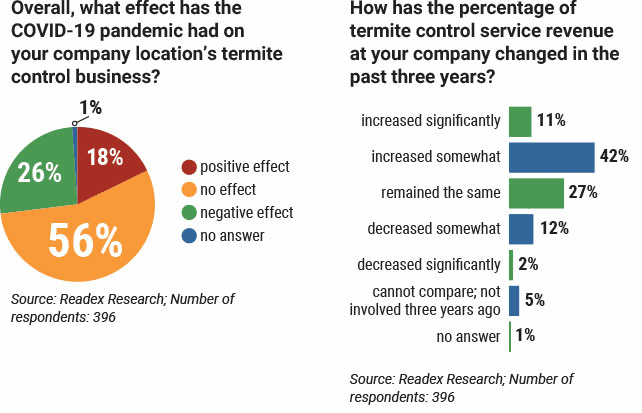Comment on this story
comment
On a clear August morning in southeastern Pennsylvania, more than a dozen adults and children stood in a park gazebo listening to mealworms sizzling in a hot skillet. They learned about entomophagy — the consumption of insects by humans — from Lisa Sanchez, a naturalist at the Lancaster County Department of Parks and Recreation who has taught the practice for 25 years.
Suddenly a mealworm squirted out of the pan. Six-year-old Adaline Welk put it in her mouth without being asked. The crowd cheered the newly baked entomophage. “It’s not that bad!” she exclaimed. “It kind of tastes like kettle corn!”
Sanchez encourages people to eat insects, in part to reduce their ecological footprint. Farm insects produce far fewer greenhouse gases and require far less land and water than conventional livestock. Insects also generate more biomass with less effort. For example, crickets are 12 times more efficient than cows at converting food into edible weight.
According to one estimate, 2 billion people are already eating insects – mostly in parts of Africa, Latin America and Asia. The practice goes back thousands of years. “I always thought, back in the ’90s, one day maybe [Americans] will do so,” says Sanchez.
The years to come could prove her right. The edible insects industry is booming — one report predicts the market will reach $9.6 billion by 2030. Consumers can already find foods like salted ants on Amazon and cricket powder protein bars in Swiss grocery stores. In recent years there have been numerous media reports extolling the benefits of eating insects.
But before insects can become commonplace, more guests need to be convinced that six-legged creatures are actually food. Through tasting experiments, surveys, and educational demos, researchers, entrepreneurs, and educators delve into the psychology of consumers and find that resistance to eating insects can be powerful.
“Overcoming the initial disgust of eating something that’s often considered dirty and unclean is a huge hurdle,” says Matthew Ruby, a psychology lecturer at La Trobe University in Albury-Wodonga, Australia, who has researched the topic.
However, researchers are discovering that once humans actually taste insects, disgust subsides. For example, in a 2022 Spanish study, volunteers felt more positive about a pizza topped with mealworms after trying it. So how do you get people to take the first bite?
“We keep finding that people are much more open to eating insects when you can’t see them,” says Ruby. Through an online survey of 177 American adults, his team found that, on average, individuals were happy with the idea of eating cookies containing up to about 30 percent ground black soldier fly larvae added as flour.
“Most people don’t want to eat a cow that looks like a cow,” says Charles Wilson, founder of Portland-based Cricket Flours (Ore Grille), pure cricket powder that customers can discreetly incorporate into baked goods or protein shakes.
Highlighting insects on packaging can also influence consumers, says Dror Tamir, co-founder and CEO of Hargol FoodTech in Israel. “We did a lot of trials with consumers to get their feedback on how much we should emphasize the locusts,” he says. “Having the locusts in front of the package is not good for us.”
Founded in 2016, Hargol is the first company to breed a grasshopper species on a commercial scale. Its products are mainly sold to other food manufacturers. However, the company also sells convenience products online to consumers through its Biblical Protein sub-brand. Hargol’s Chocolate Protein Shake Mix is a chocolatey liquid pouring into a glass – no wings, legs or antennae in sight.
Once people try ground insects, they’re often ready to turn to the whole bug, says Joseph Yoon, founder of Brooklyn Bugs, an organization dedicated to increasing appreciation for edible insects. Formerly a private chef, Yoon now conducts insect cooking demonstrations and tastings at schools, universities and museums. He might offer gougeres (French cheese puff pastries) made from cricket powder to beginners. “They are usually ready to see almost immediately [the insect]’ says Yoon. “They say, ‘I ate those cricket gougeres. That was easy. I could eat this all day. All right, give me something else.’”
But before consumers feel compelled to grab a pack of dry crickets, companies need to entice them with advertising. “Telling people to eat more insects because it’s good for them and/or good for the planet doesn’t seem to have much of an impact on behavior,” says experimental psychologist and gastrophysicist Charles Spence of the University of Oxford in England.
In a 2022 study, his team tested a proven marketing strategy instead: celebrity endorsements. Researchers presented fictional ads for insect-based foods to more than 1,000 people across the United States. Volunteers who saw ads featuring athletes like Serena Williams and Roger Federer or actors like Ryan Reynolds and Angelina Jolie said they were more willing to try the product than those who saw ads without celebrities.
The results suggest marketers may not need to reinvent advertising to sell insects, Spence says.
Regardless, taste affects whether someone will come back for more. Yoon teaches people how to incorporate insects into their recipes in an appealing way. For example, adding cricket powder to marinara sauce not only adds nutrients but also umami. “Flavour is king,” says Tamir. Locusts, he says, have “umami flavors — mostly mushroom, pecan, coffee, and chocolate. They enhance meat flavors.”
Hargol works with processed meat manufacturers in the United States, Canada and Asia to develop products such as burgers, meatballs and sausage that contain chicken, beef or other protein sources combined with ground locusts.
Tamir points to a picture of a prototype chicken locust patty and outlines Hargol’s selling points: Because of that unique ingredient (which he leaves unnamed), it tastes better than other burgers. “And then we can explain, it’s better for the environment, it’s better for health.”
Watching others enjoy insects can also help break down barriers. In Sanchez’s entomophagy classes, she talks about how much she likes to eat insects herself. She doesn’t force anyone to try insects, although most, she says, do.
Back at the Lancaster County pavilion after Welk put the cooked mealworm in her mouth, many others followed suit. Welk’s 8-year-old sister Leona wasn’t so sure. They taste better than sprinkles, Sanchez assured her.
Leona watched family members sample the insects. The program was drawing to a close when she finally marched to the demo table, grabbed a mealworm and ate it. “It didn’t taste like anything,” she shrugged. “I still don’t put them on my ice cream.”
A longer version of this article originally appeared in the Front Matter section of the Proceedings of the National Academy of Sciences.
More health and wellness stories
Check out 3 more stories










